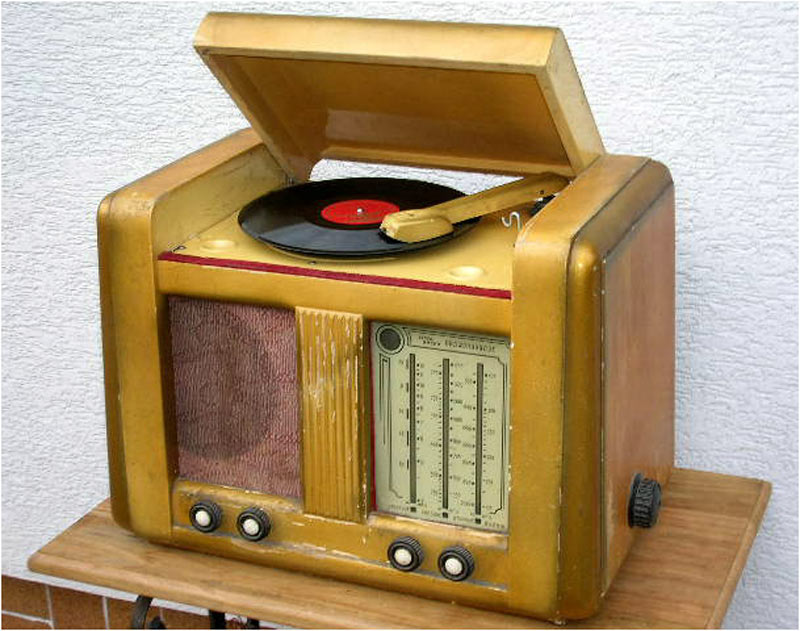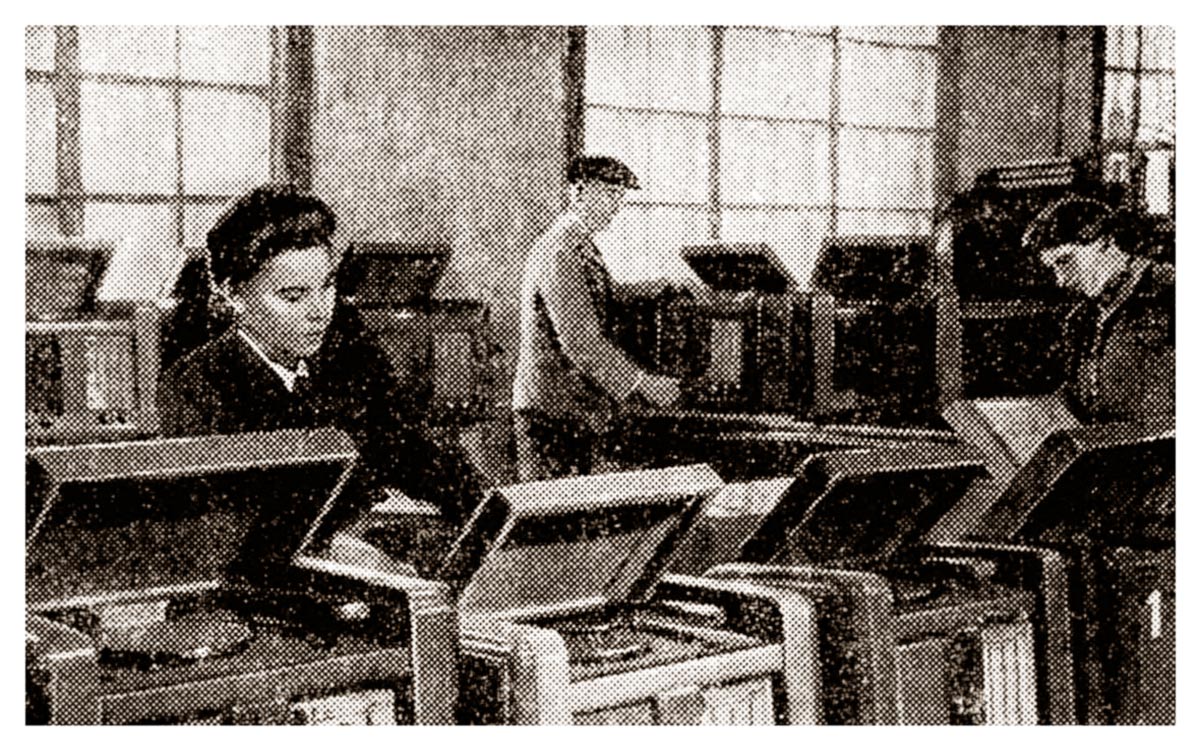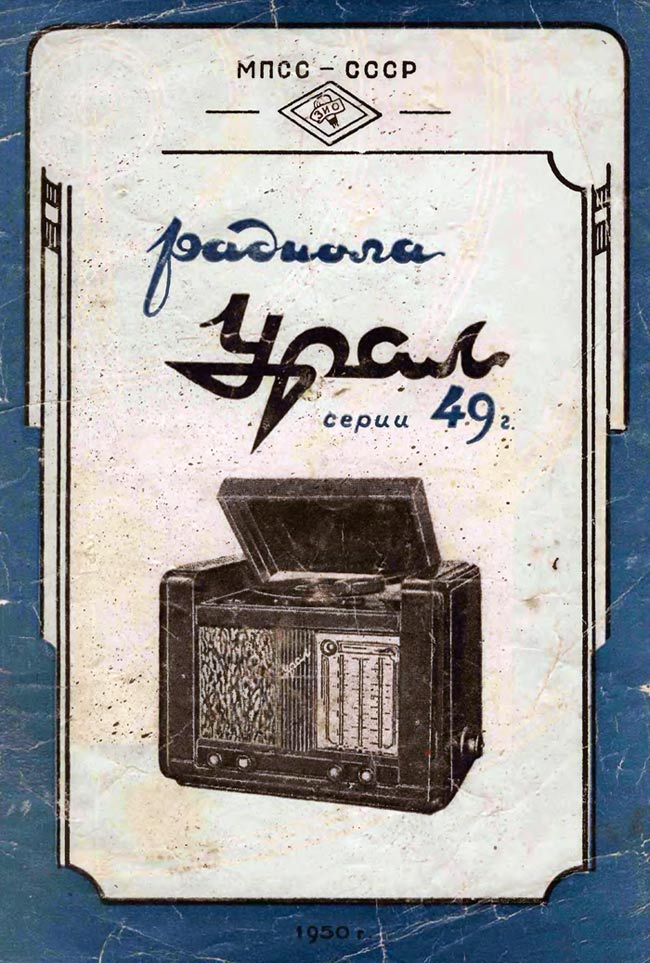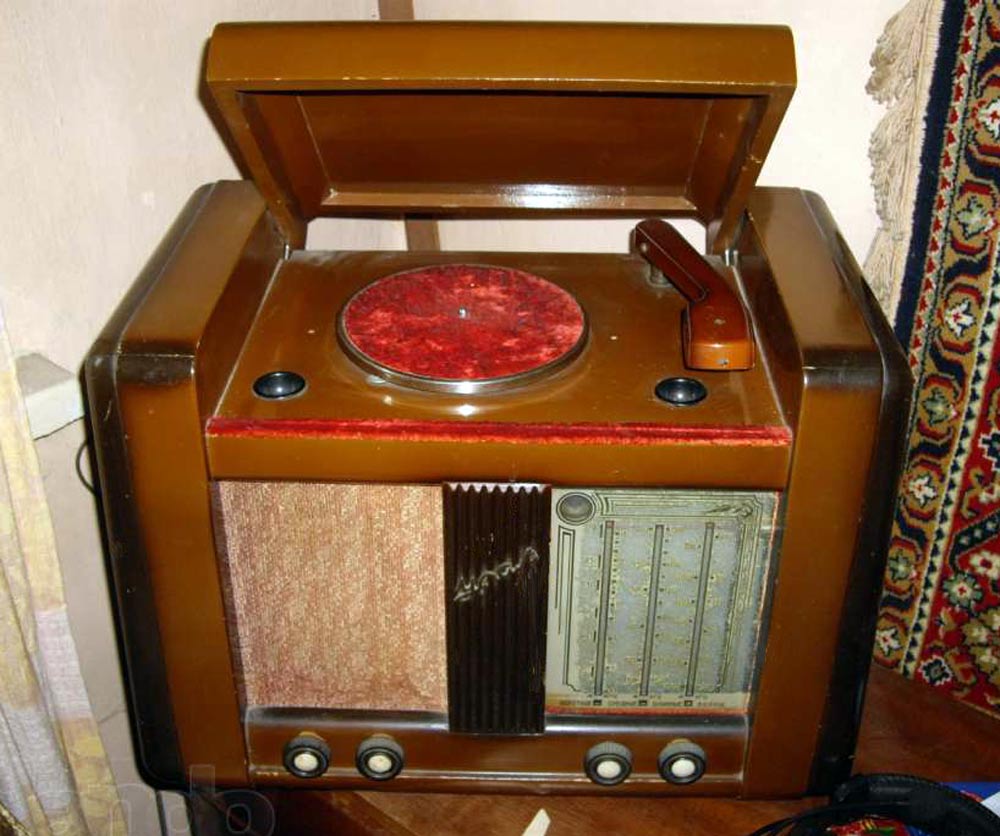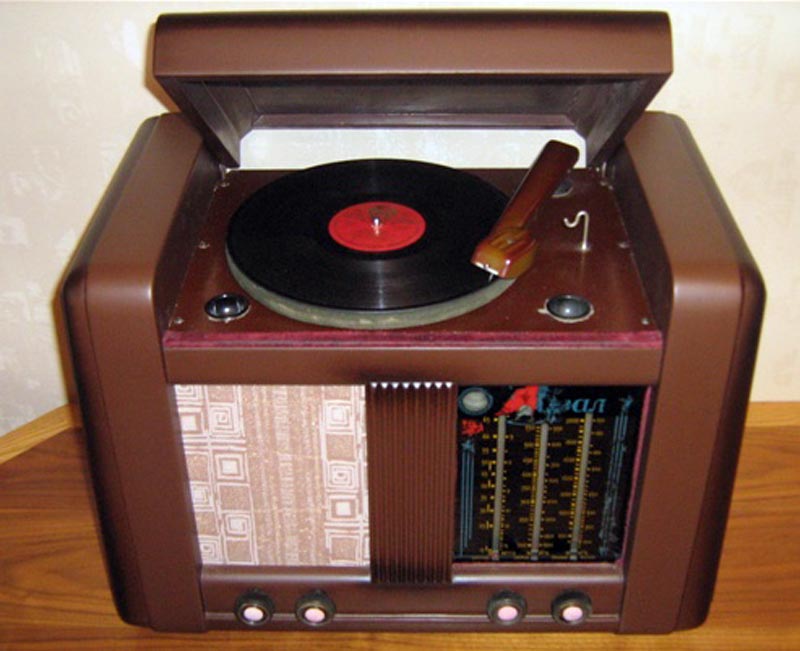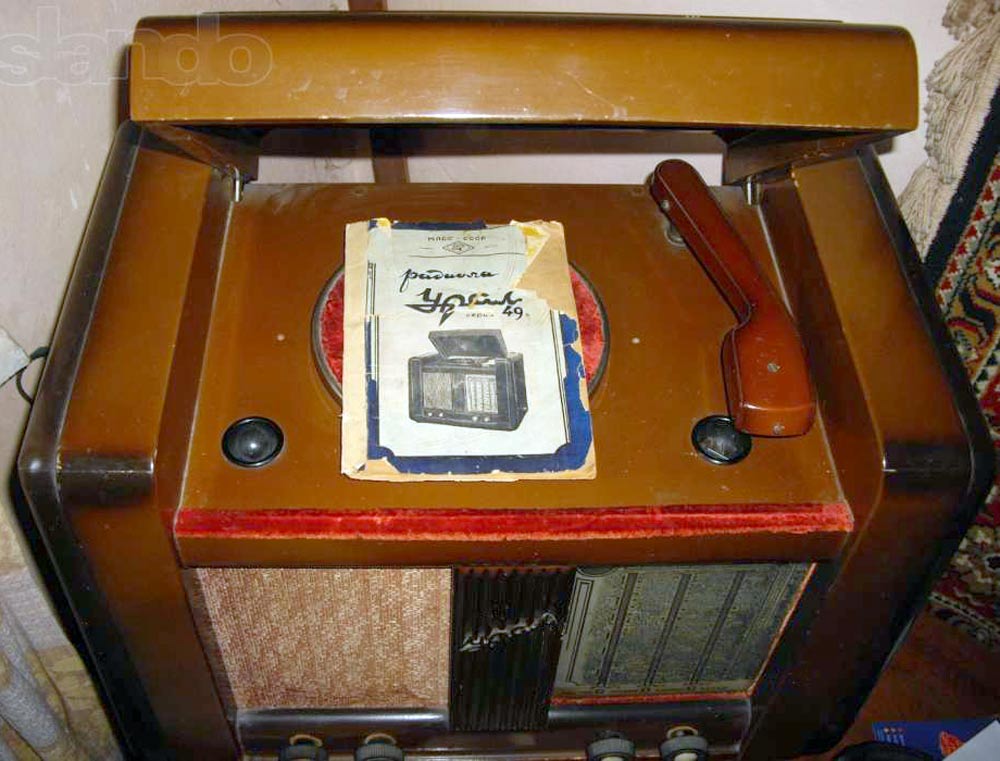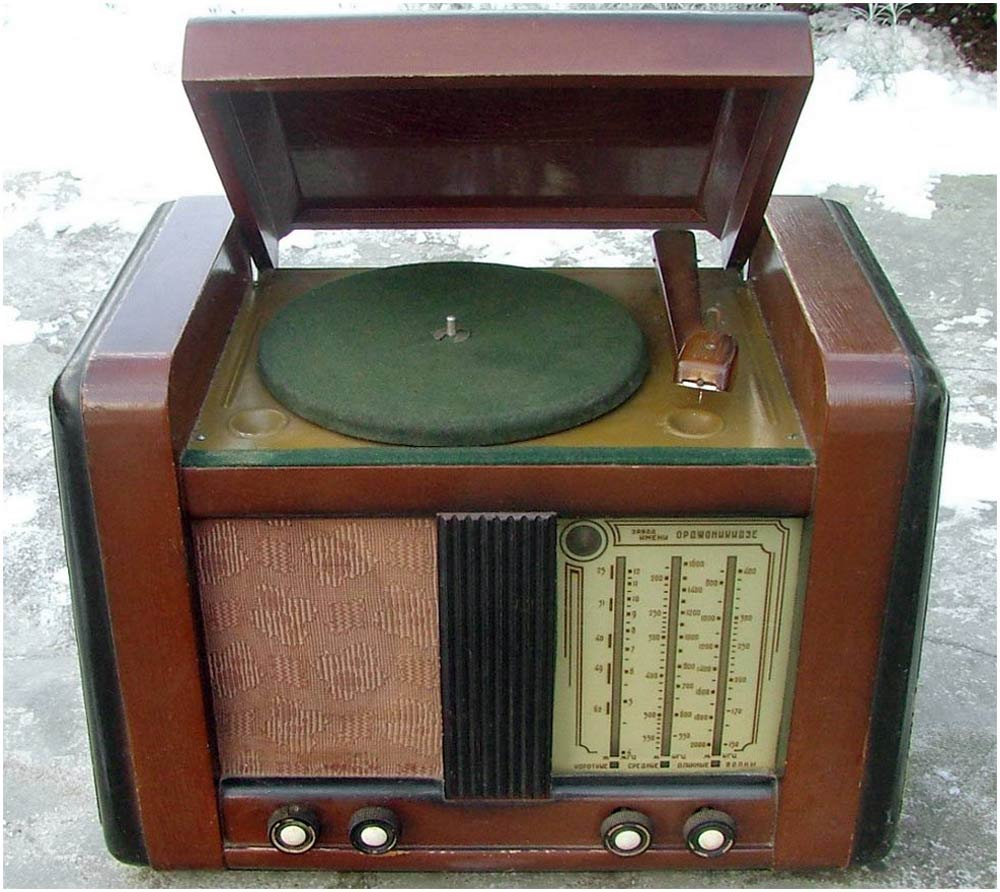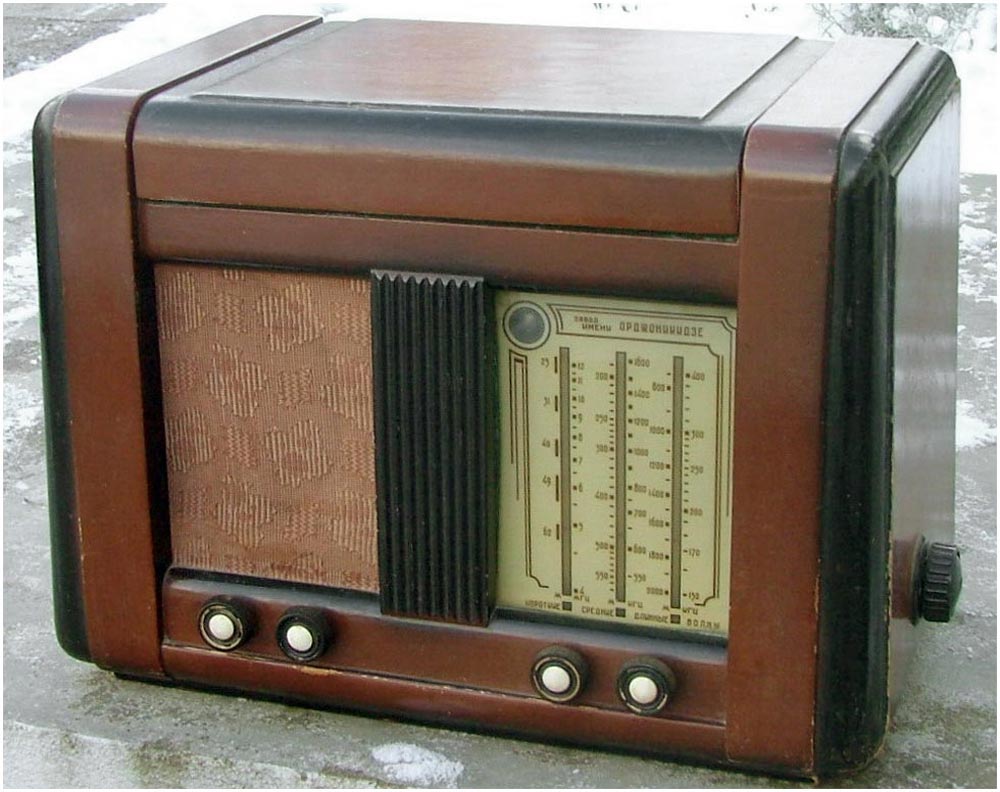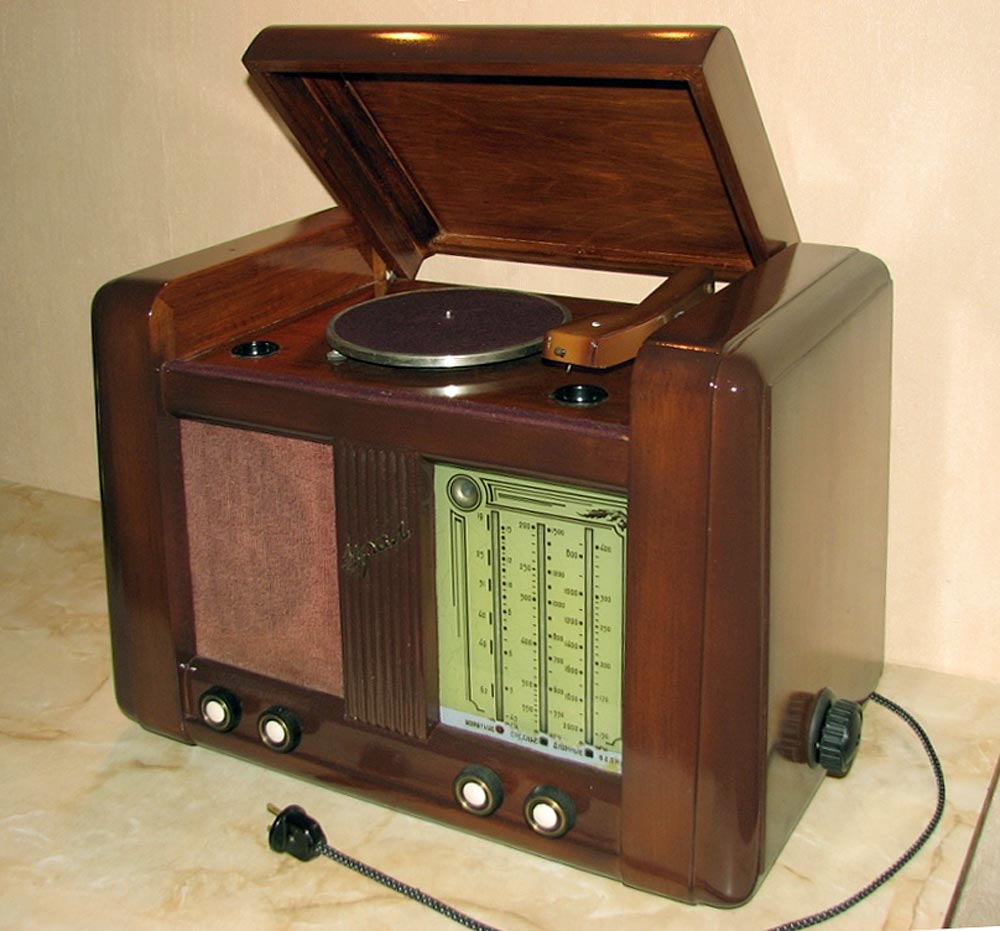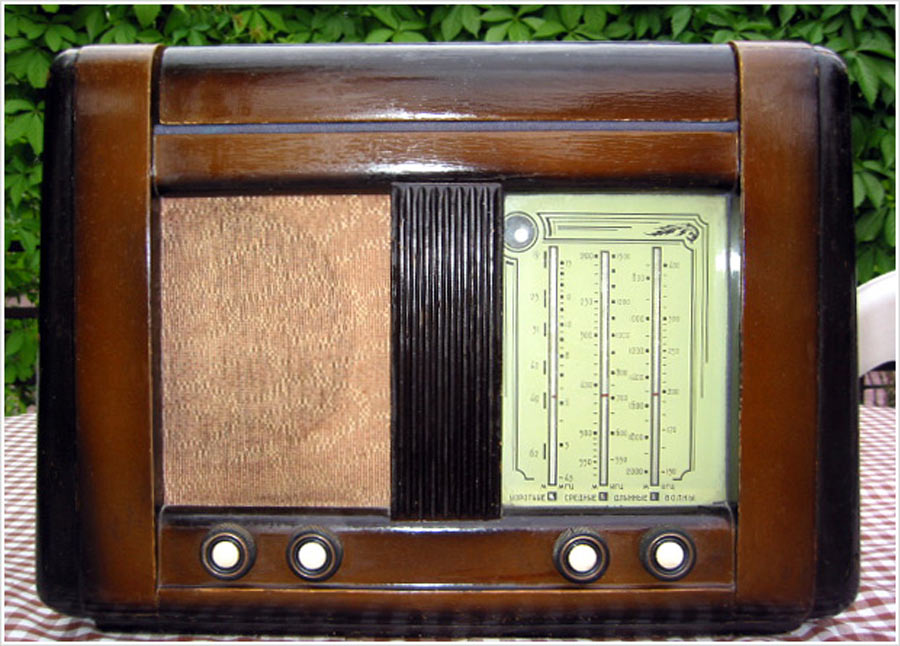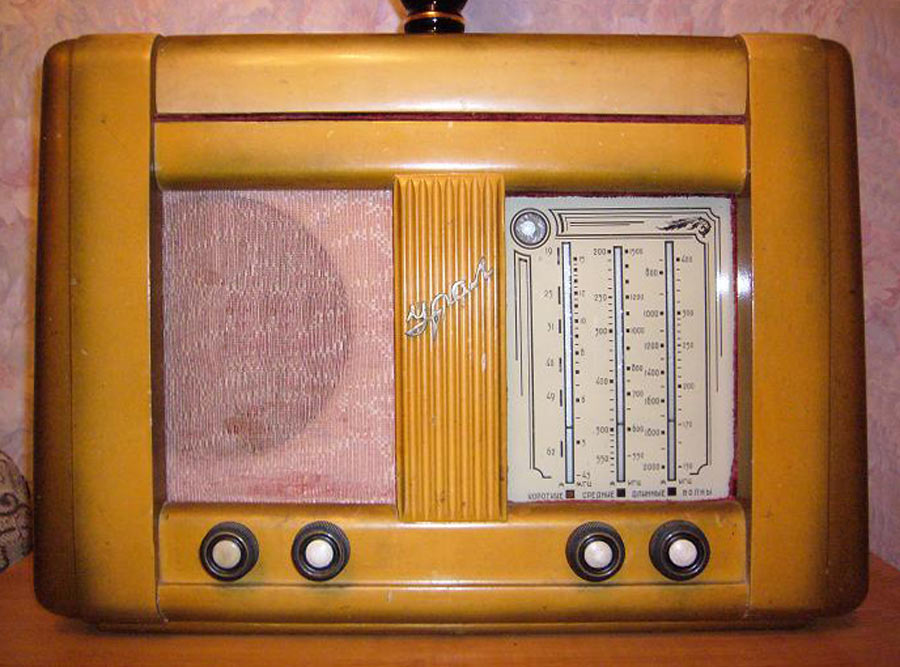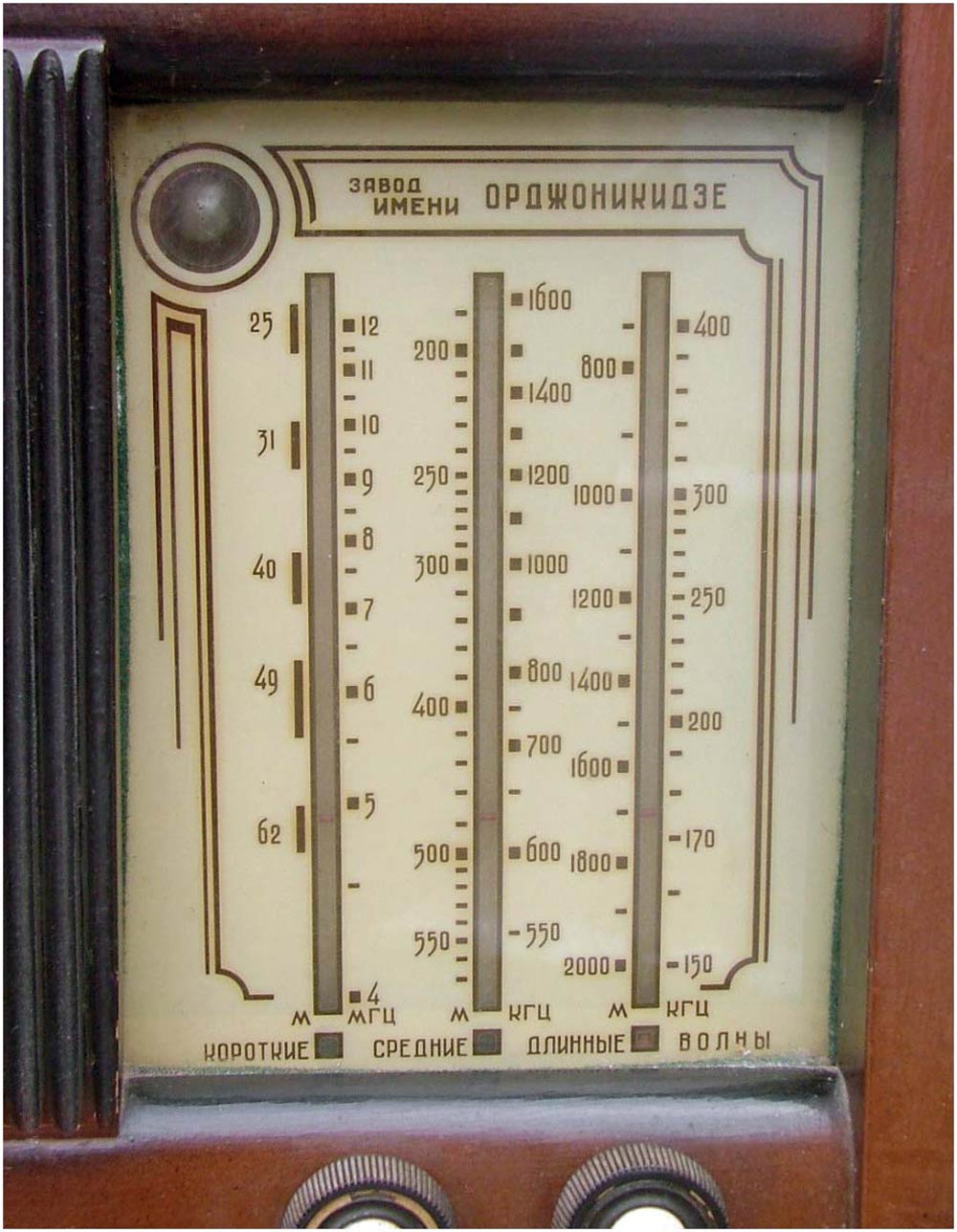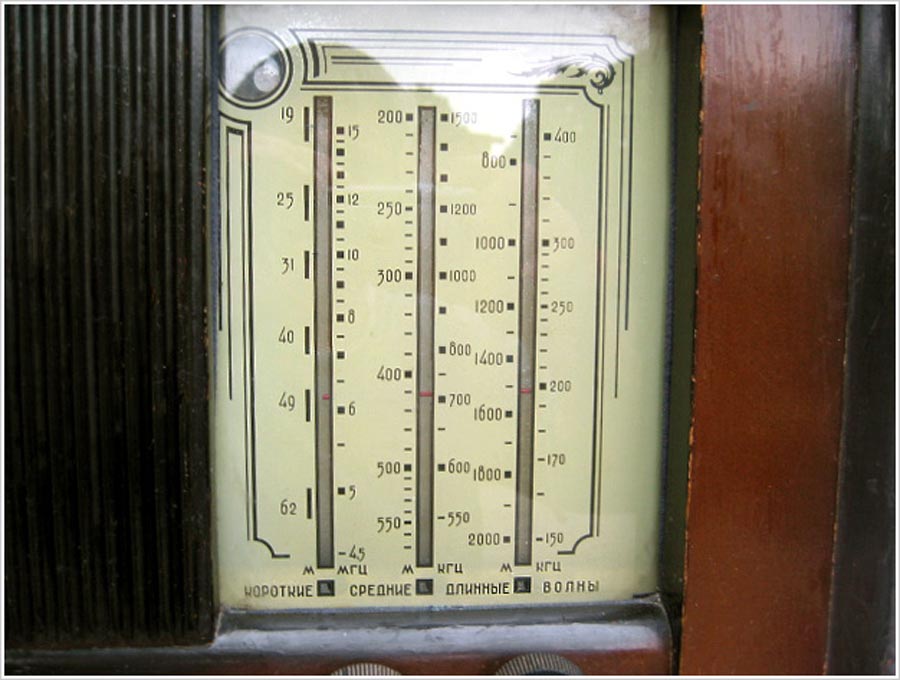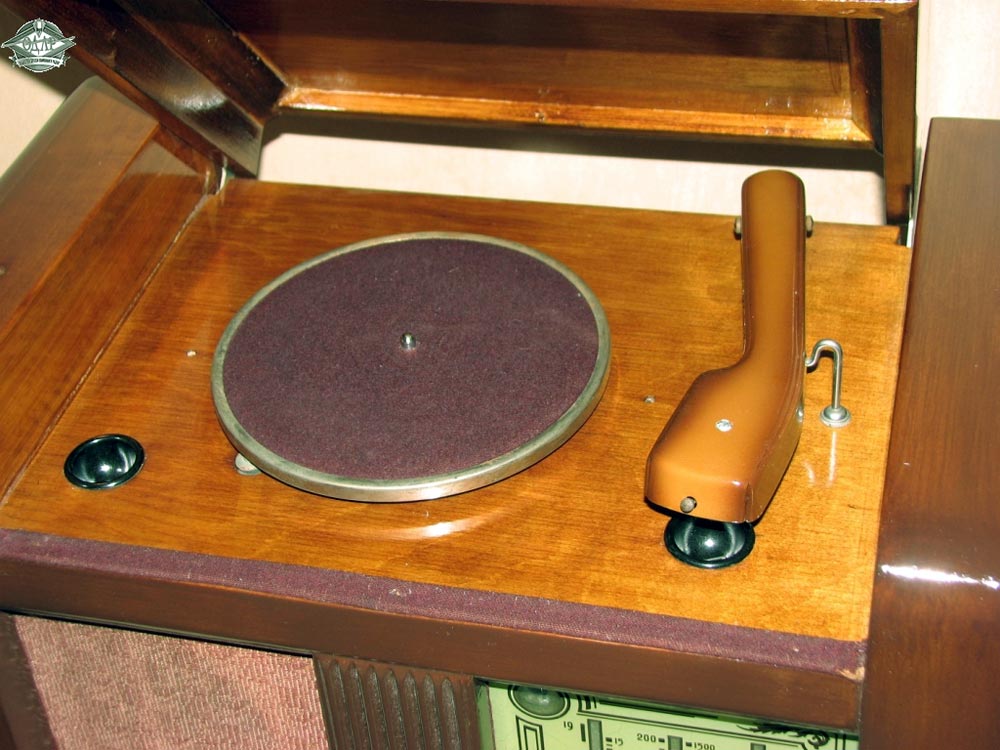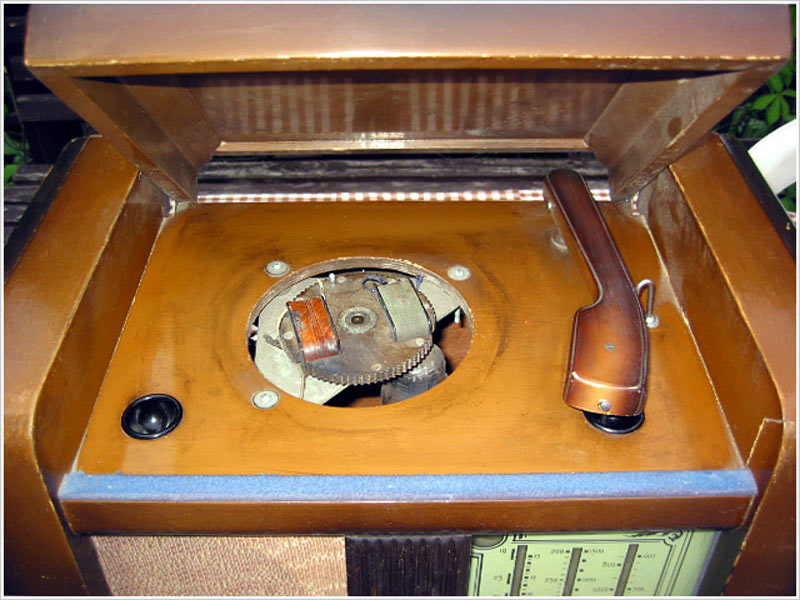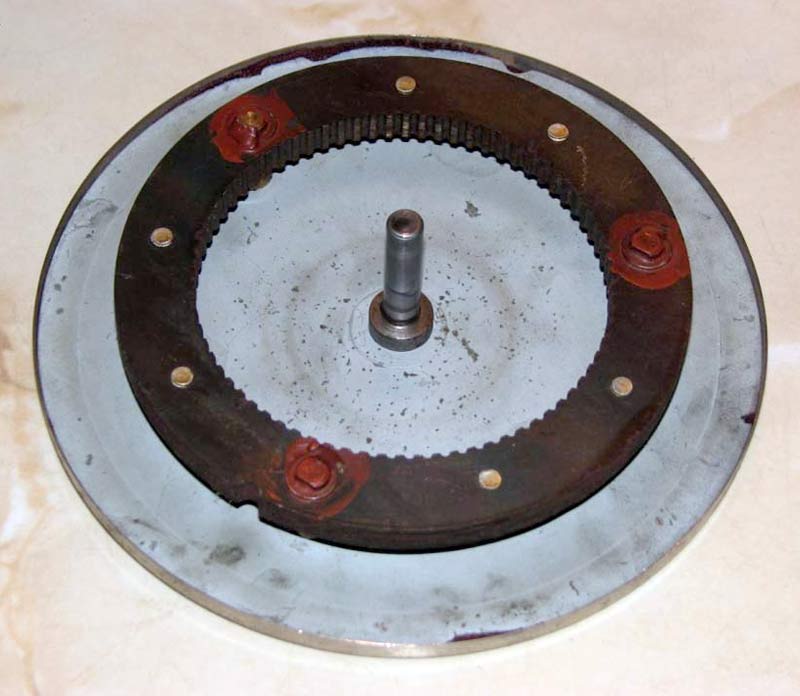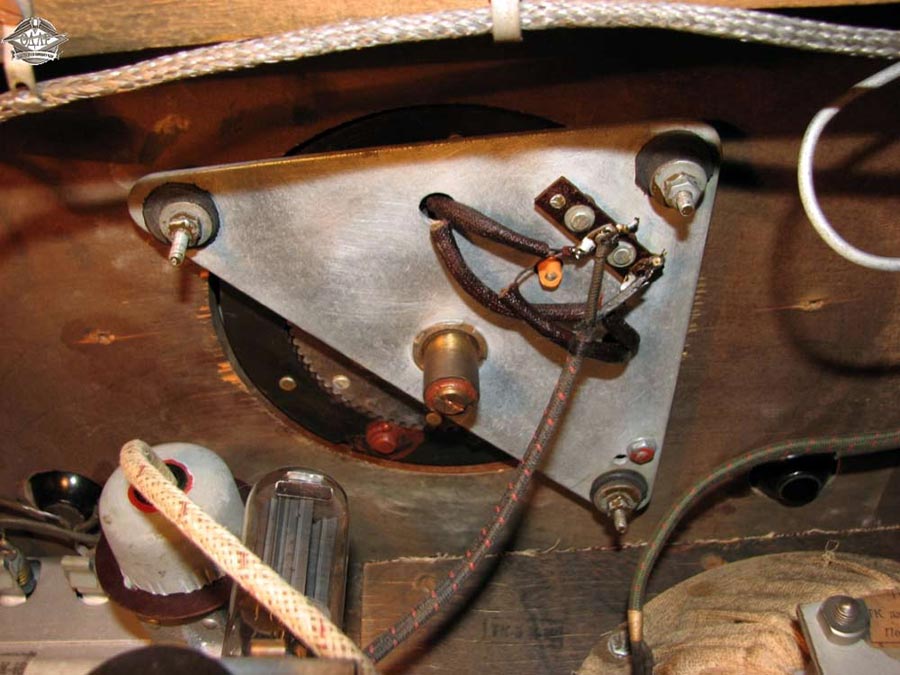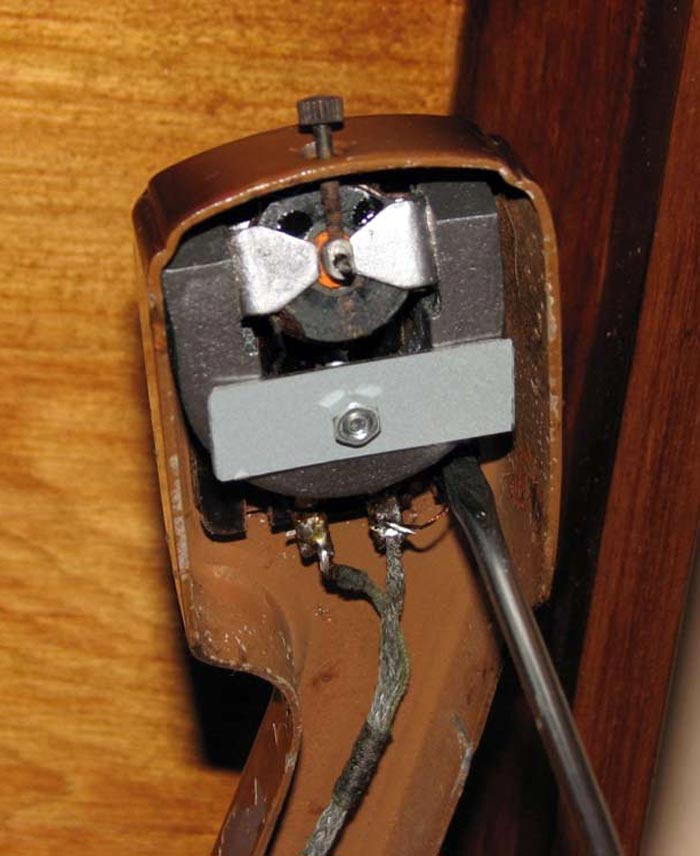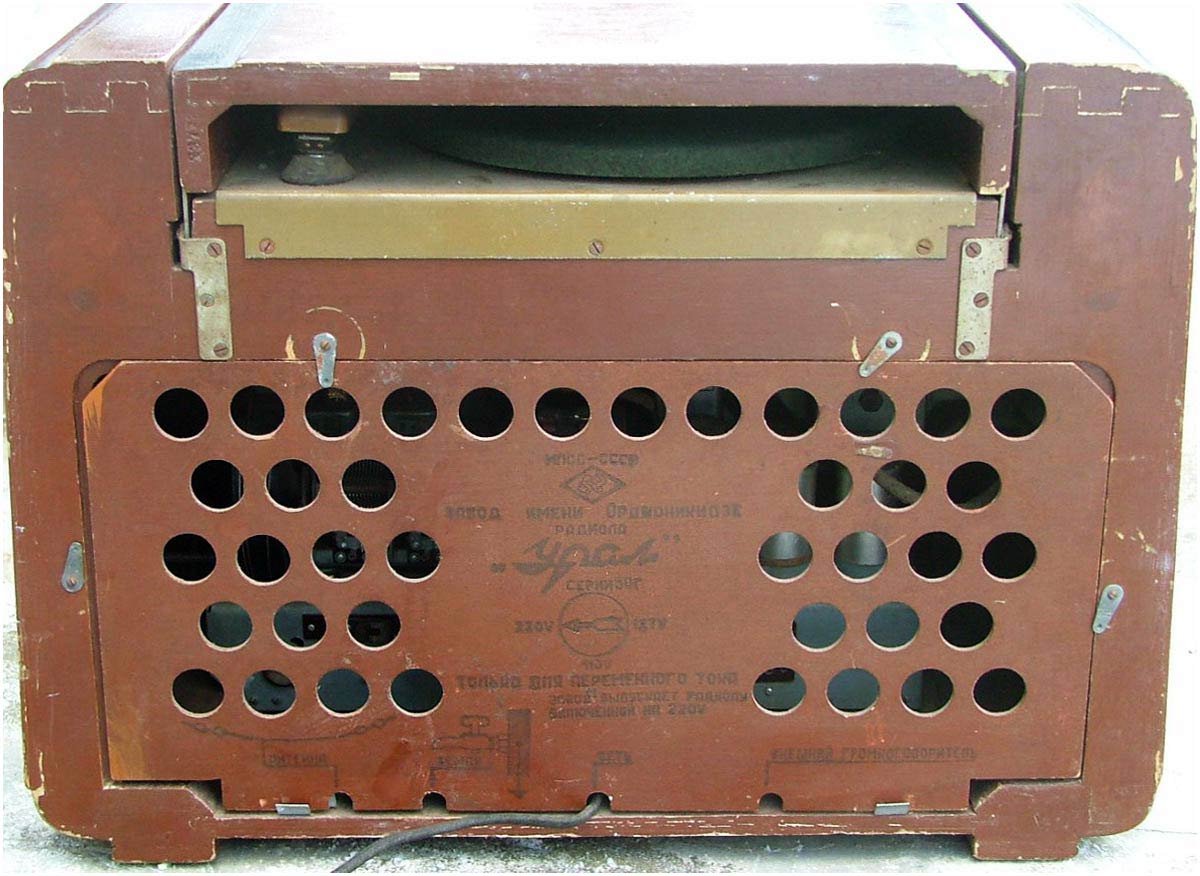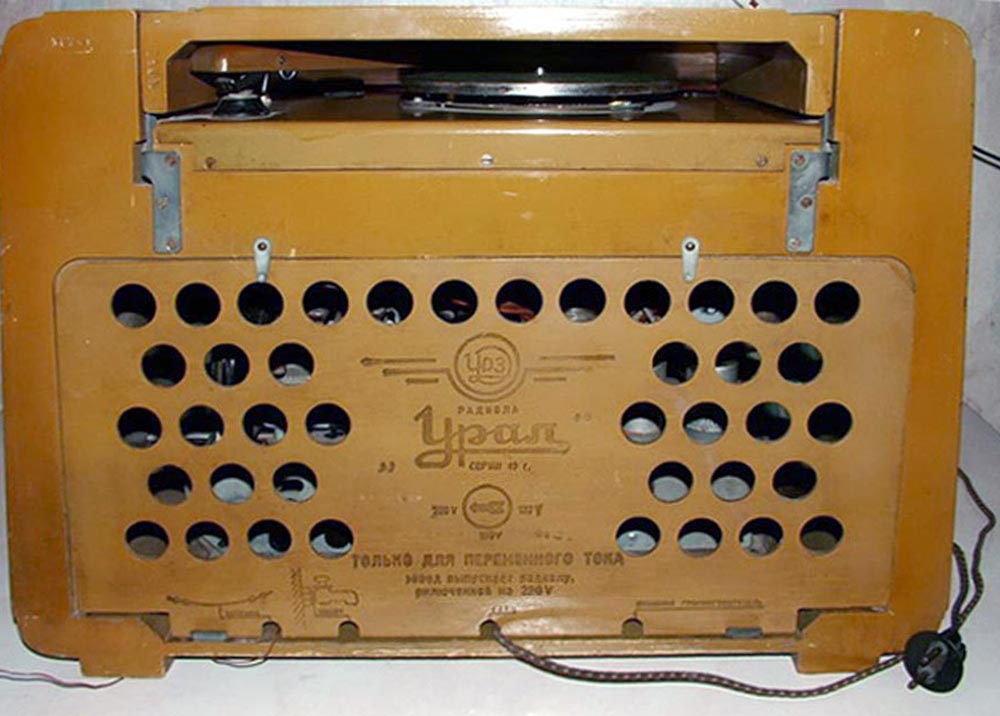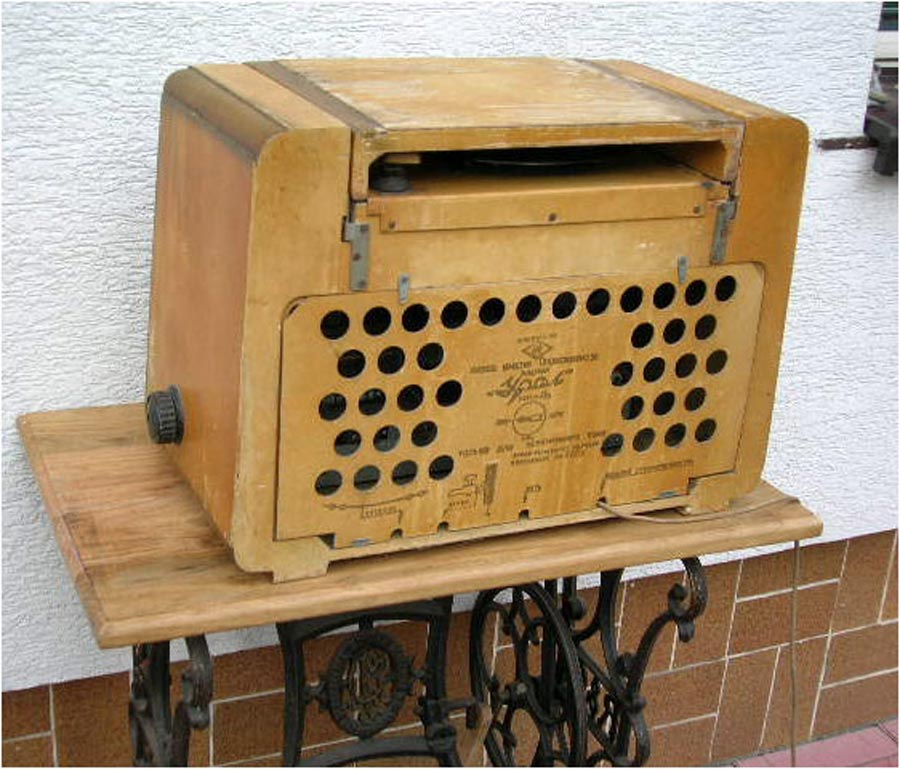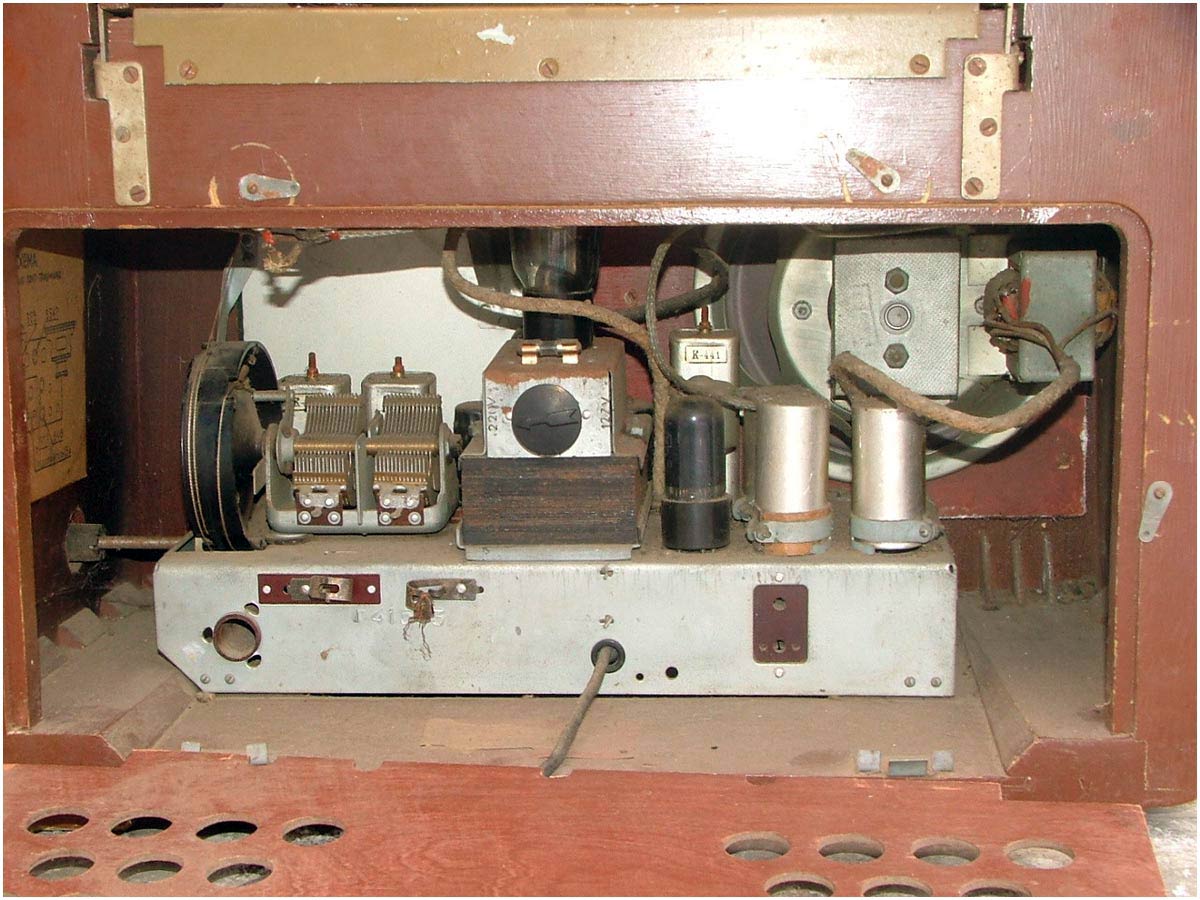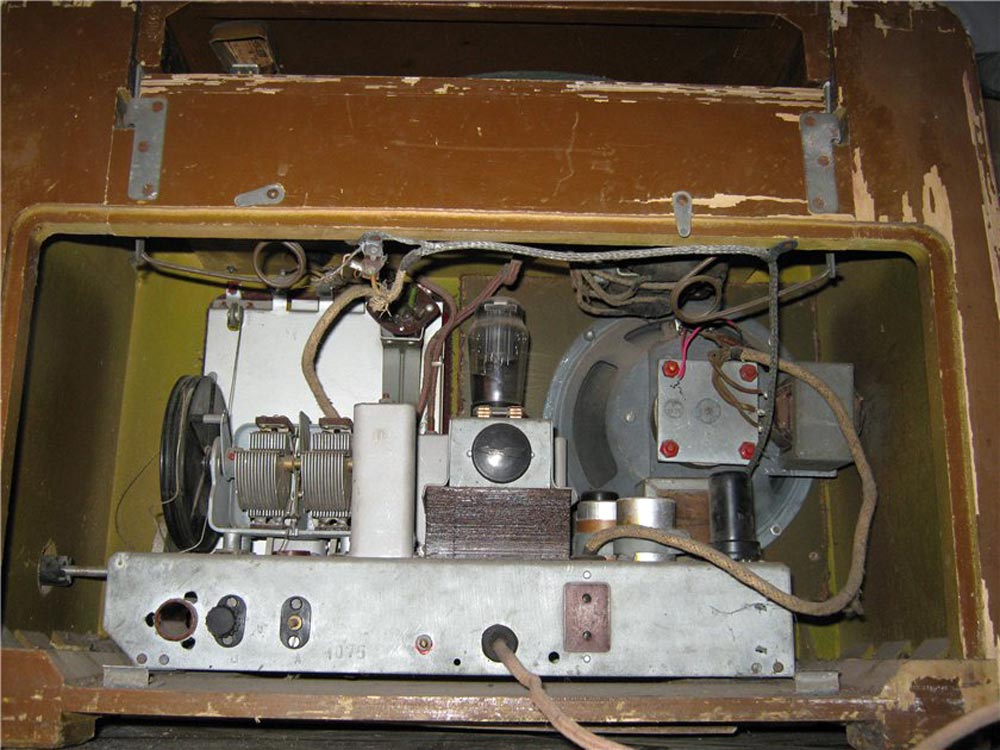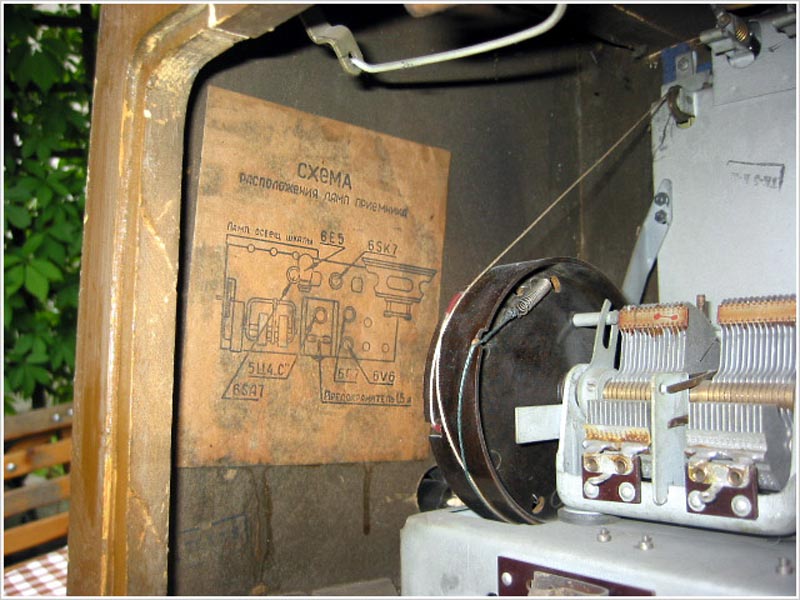Radiola network lamp `` Ural-49 ''.
Network tube radiosDomesticSince the beginning of 1949, the Ural-49 network tube radiola has been produced at the Sarapul plant named after Sergo Ordzhonikidze and at Plant No. 626 NKV (Sverdlovsk Automation Plant). The appearance and design of the Ural-49 radio system became the basis for the creation of subsequent Ural series radio transmitters. Radiola "Ural-49" consists of a 6-tube receiver and a 78 rpm electric player. Frequency ranges up to 1951: DV 150 ... 410 kHz, SV 520 ... 1500 kHz, KV 4.5 ... 15.5 MHz. Output power 2W, at 7% distortion. The bandwidth of the entire path ensures reproduction of the audio frequency range of 100 ... 4000 Hz. AGC provides a voltage change at the output by 10 dB with a change at the input by 26 dB. Power consumption 100 W (with 110 W asynchronous motor) and 80 W when receiving. When switching to the operation of the EPU, the illumination of the scale and indicator turns off. The dimensions of the radio are 549x393x310 mm, its weight is 24 kg. At the beginning of 1950, the radio was upgraded to Ural-49M. The electrical circuit has been changed, in which some elements and lamps are replaced by others. Ranges changed. The MW range was expanded to 1600 kHz, and the HF range of 4 ... 12.1 MHz was adjusted to the future GOST 1951. The EPU of the first radio transmitters consisted of a synchronous electric motor of the CM-1 type and an AM electromagnetic pickup mounted on a wooden panel. The pickup and motor were switched on with a separate switch. The electric motor was connected to a power transformer so that 110 volts were always supplied to it when switching to any of the supply voltages. In the modernized radio, the EPU has been changed. It uses an asynchronous electric motor of the DAG type with a disk and an electromagnetic pickup ZS. Introduced hitchhiking, associated with the lever of the pickup and automatically supplies power to the engine, depending on the position of the pickup relative to the record. The EPU is assembled on a metal chassis. The external design and characteristics of the basic and modernized radios are the same. In the initial period of modernization, there were radios with combined elements, for example, a range of 19 meters and a new electric motor. The Sverdlovsk radio tape recorder was distinguished by the URZ (Ural Radio Plant) logo and a black scale, and at the top, near the fine tuning indicator, against the background of a red banner was a black silhouette of the monument to YM Sverdlov. I would like to note that Sverdlovsk plant No. 626 NKV (URZ) produced these and subsequent models of radiolowers in times smaller than the Sarapul radio plant.